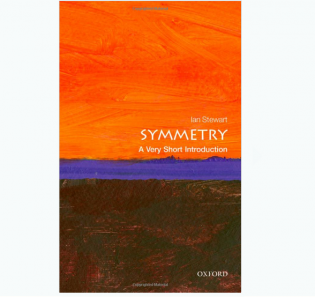Symmetry: A Very Short Introduction – Book Review
 We are all fascinated with symmetry. Patterns that look the same when viewed in different ways seem to appeal to us on a very low fundamental level. There is perhaps an evolutionary reason for that – symmetric patterns are often a sign of non-random activity, and thus they can be a source of opportunity or danger. However, as it turns out, on a very fundamental level the nature itself is extremely symmetrical, and it was this realization that has lead to some of the most astounding insights into the nature of physical laws.
We are all fascinated with symmetry. Patterns that look the same when viewed in different ways seem to appeal to us on a very low fundamental level. There is perhaps an evolutionary reason for that – symmetric patterns are often a sign of non-random activity, and thus they can be a source of opportunity or danger. However, as it turns out, on a very fundamental level the nature itself is extremely symmetrical, and it was this realization that has lead to some of the most astounding insights into the nature of physical laws.
Of all the books in the Very Short Introduction series this one is perhaps the closest to my own intellectual and professional interest. As a theoretical Physicist who uses the concepts and mathematical tools of symmetry daily in my own work, I am both intimately familiar with this subject and endlessly mesmerized by its implications. And indeed I enjoyed reading this book a great deal, and it has managed to cast a few glimmers of new light on the topics that I was already acquainted with, and surprised me with tidbits of information that I never knew before. For me this was a very welcome reintroduction to an old friend. The book is very well written and it was a pleasure to read.
Unfortunately, I am keenly aware that my own background is quite unique, and far removed from the one of the intended audience for this book. This book, quite simply, uses by far the most sophisticated mathematical and technical notation of any book in the VSI series. It is filled with specialized jargon and notions that are inaccessible to the general audience. Granted, there are a few chapters that can be appreciated by anyone with good educational background and a decent level of curiosity about the way that the world is structured. However, for every one of those chapters there is one that can only be understood by someone who has taken either higher-level university math courses or graduate courses in theoretical physics or chemistry. This is why I feel compelled to give this book only three stars. It is indeed a very good book, but the author completely missed the level of its exposition.
There are no comments yet, add one below.
